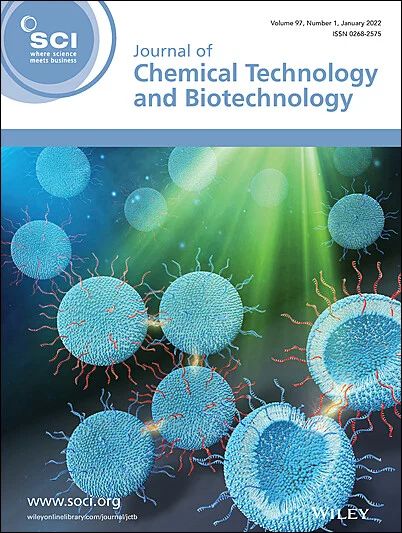求助PDF
{"title":"A perspective on alignment between steady-state design and control for a distillation system in the context of flexibility analysis","authors":"Zong Yang Kong, Tiffany Ang, Vincentius Surya Kurnia Adi, Jaka Sunarso","doi":"10.1002/jctb.7770","DOIUrl":null,"url":null,"abstract":"<p>This perspective paper discusses the alignment between steady-state design and control (dynamic) simulation in the context of flexibility analysis for distillation systems. Operational variations, such as fluctuations in feed composition or flowrate, can stem from external factors like raw material quality or temperature variations. These disturbances need to be mitigated to ensure optimal industrial performance. Traditionally, these process uncertainties are usually considered in a sequential manner, where the steady-state flowsheet is established first, and control performance is analyzed afterwards. However, recent studies have started integrating flexibility index into the design phase to account for process uncertainties. While this integration has improved design strategies, aligning steady-state and dynamic control simulations for comprehensive flexibility analysis remains underexplored. In this paper, we wish to share new perspectives and insights we have observed by analyzing the existing literature. We highlight some points not immediately apparent in our previous studies, hoping these insights will serve as guidelines for future research in this direction. We believe that validating results between steady-state and control simulations is a long-term endeavor that cannot be conclusively addressed soon. However, we hope this paper will be valuable to future researchers, contributing to advancing this field and reaching those who will appreciate and build upon these insights. © 2024 Society of Chemical Industry (SCI).</p>","PeriodicalId":15335,"journal":{"name":"Journal of chemical technology and biotechnology","volume":"100 1","pages":"6-12"},"PeriodicalIF":2.8000,"publicationDate":"2024-10-15","publicationTypes":"Journal Article","fieldsOfStudy":null,"isOpenAccess":false,"openAccessPdf":"","citationCount":"0","resultStr":null,"platform":"Semanticscholar","paperid":null,"PeriodicalName":"Journal of chemical technology and biotechnology","FirstCategoryId":"5","ListUrlMain":"https://onlinelibrary.wiley.com/doi/10.1002/jctb.7770","RegionNum":4,"RegionCategory":"生物学","ArticlePicture":[],"TitleCN":null,"AbstractTextCN":null,"PMCID":null,"EPubDate":"","PubModel":"","JCR":"Q3","JCRName":"BIOTECHNOLOGY & APPLIED MICROBIOLOGY","Score":null,"Total":0}
引用次数: 0
引用
批量引用
Abstract
This perspective paper discusses the alignment between steady-state design and control (dynamic) simulation in the context of flexibility analysis for distillation systems. Operational variations, such as fluctuations in feed composition or flowrate, can stem from external factors like raw material quality or temperature variations. These disturbances need to be mitigated to ensure optimal industrial performance. Traditionally, these process uncertainties are usually considered in a sequential manner, where the steady-state flowsheet is established first, and control performance is analyzed afterwards. However, recent studies have started integrating flexibility index into the design phase to account for process uncertainties. While this integration has improved design strategies, aligning steady-state and dynamic control simulations for comprehensive flexibility analysis remains underexplored. In this paper, we wish to share new perspectives and insights we have observed by analyzing the existing literature. We highlight some points not immediately apparent in our previous studies, hoping these insights will serve as guidelines for future research in this direction. We believe that validating results between steady-state and control simulations is a long-term endeavor that cannot be conclusively addressed soon. However, we hope this paper will be valuable to future researchers, contributing to advancing this field and reaching those who will appreciate and build upon these insights. © 2024 Society of Chemical Industry (SCI).
从灵活性分析角度看蒸馏系统稳态设计与控制之间的协调问题
本文讨论了在蒸馏系统柔性分析的背景下,稳态设计和控制(动态)仿真之间的一致性。操作变化,如进料成分或流量的波动,可能源于原料质量或温度变化等外部因素。需要减轻这些干扰,以确保最佳的工业性能。传统上,通常以顺序的方式考虑这些过程的不确定性,首先建立稳态流程图,然后分析控制性能。然而,最近的研究已经开始将柔性指标纳入设计阶段,以考虑过程的不确定性。虽然这种集成改进了设计策略,但将稳态和动态控制模拟结合起来进行全面的灵活性分析仍有待探索。在本文中,我们希望通过分析现有文献来分享我们观察到的新观点和见解。我们强调了一些在我们之前的研究中没有立即显现出来的观点,希望这些见解将作为未来研究的指导方针。我们认为,验证稳态和控制模拟之间的结果是一个长期的努力,不能很快得到最终解决。然而,我们希望这篇论文对未来的研究人员有价值,有助于推进这一领域,并接触到那些将欣赏和建立这些见解的人。©2024化学工业学会(SCI)。
本文章由计算机程序翻译,如有差异,请以英文原文为准。

 求助内容:
求助内容: 应助结果提醒方式:
应助结果提醒方式:


